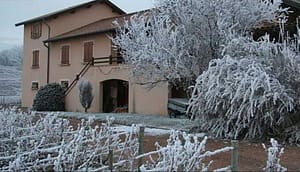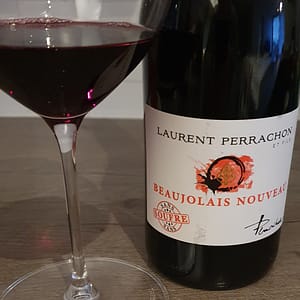I think it’s common not to visit sights and attractions close to your home, because you can always go – some other time. This may also be the case with bars and restaurants. Stavanger, Norway (in my own backyard, so to speak) has got its first decent wine bar, and then it should take three months before I managed to get there, and then quite by chance, while I was waiting for a party to start some other place in downtown Stavanger.
Once inside, I meet an old wine-mate Emil Heimdal behind the bar, and then I know we are talking “serious business” here. I know him from several restaurants over the years, and this is a man with passion for wine and real dedication. Emil took over the wine section of this bar, now called Vinkontoret (The Wine Office), together with Christoffer Ingebretsen. They have no purchase agreement that binds them, so they buy exactly the wines that they want and now collaborate with about 30 importers. They use the Coravin system, which allows them to serve anything by the glass. Here you can buy smaller units than a whole glass and pay less, so you can taste more wines during an evening.

Emil serves smaller units of better wines
They can literally offer hundreds of wines. They have a list that is heavy on traditional wine regions such as Burgundy, Rhône, Alsace, Mosel, Rhine, Piemonte, Tuscany and … say west-of-Vienna Austria.
But these people are just as crazy wine freaks to throw in almost anything you can think of.
As for grapes, of course they offer cabernet, merlot, syrah and such, without being “ashamed” of it at all (as if that would be something to regret). If you look carefully at the list you will see some “oddities” like a manzoni from Trentino, a kékfrankos from (why not) Austria, and you can get the “Pornfelder” if you like, Lukas Krauß’ German blend of portugieser and dornfelder. But most of all it’s a focus on the classic grapes here, even from not-so-classic countries.
There was a time when Stavanger was more in the avant-garde of the Norwegian culinary movement, when the oil industry was booming, and the most important gastronomic educational institutions were located there. Today there is no doubt that the hegemony is in Oslo, and that every initiative like this deserves a warm welcome.
Emil and Christoffer also have a small selection of handcrafted beers, like lambic and geuze. (Bear in mind that one of the country’s best beer selections is just across the same narrow street, at Cardinal bar. So this is obviously not their biggest priority.) The wine selection must be best in town. I am not sure if the wine list is the longest, but there are several hundred references, and mainly wines to drink, no show-off crazy over-priced stuff.
Here are just a few picks from my first brief visits.


Here is a riesling spätlese trocken from the Ökonomierat Rebholz of Pfalz, the Rebholz 2008. It proved to be a rich and honeyed wine with a thick texture and great acidity. To the right is a Gevrey-Chambartin, the Rossignol-Trapet Clos Prieur 1er Cru 2008 from Domaine Rossignol. It shows a clear ruby, somewhat developed colour, and smells quite aerial og cherry and plums. The tannins are still evident, and the acidity is well integrated. The actual vintages of these wines on sale are 2012 and 2013, respectively. So come here to get the wines closer to their peak.


Here is a wonderful pinot noir called Nature 2015 from Alsace producer Rieffel, now with Lucas in charge. Today the estate covers 10 hectares, all organic certified. The 30 year old vines are planted in soil of clay and alluvial sandstones. The fermentation is spontaneous and goes on for seven months in 228L barrels. It’s really fresh, juicy and quite full, with just enough structure to match a wide variety of food. After this I wanted a red with darker fruit, and I suggested syrah. On the counter was a Stellenbosch syrah, that was already opened, so I went for that one. The Liberator The Francophile 2015 (Dreyfus Ashby) was ok; a somewhat warm blackberry fruit, earthy with some spice, mouthfilling with rounded tannins.

The door is permanently closed at The Office (Kontoret). The Wine Office has opened.


















